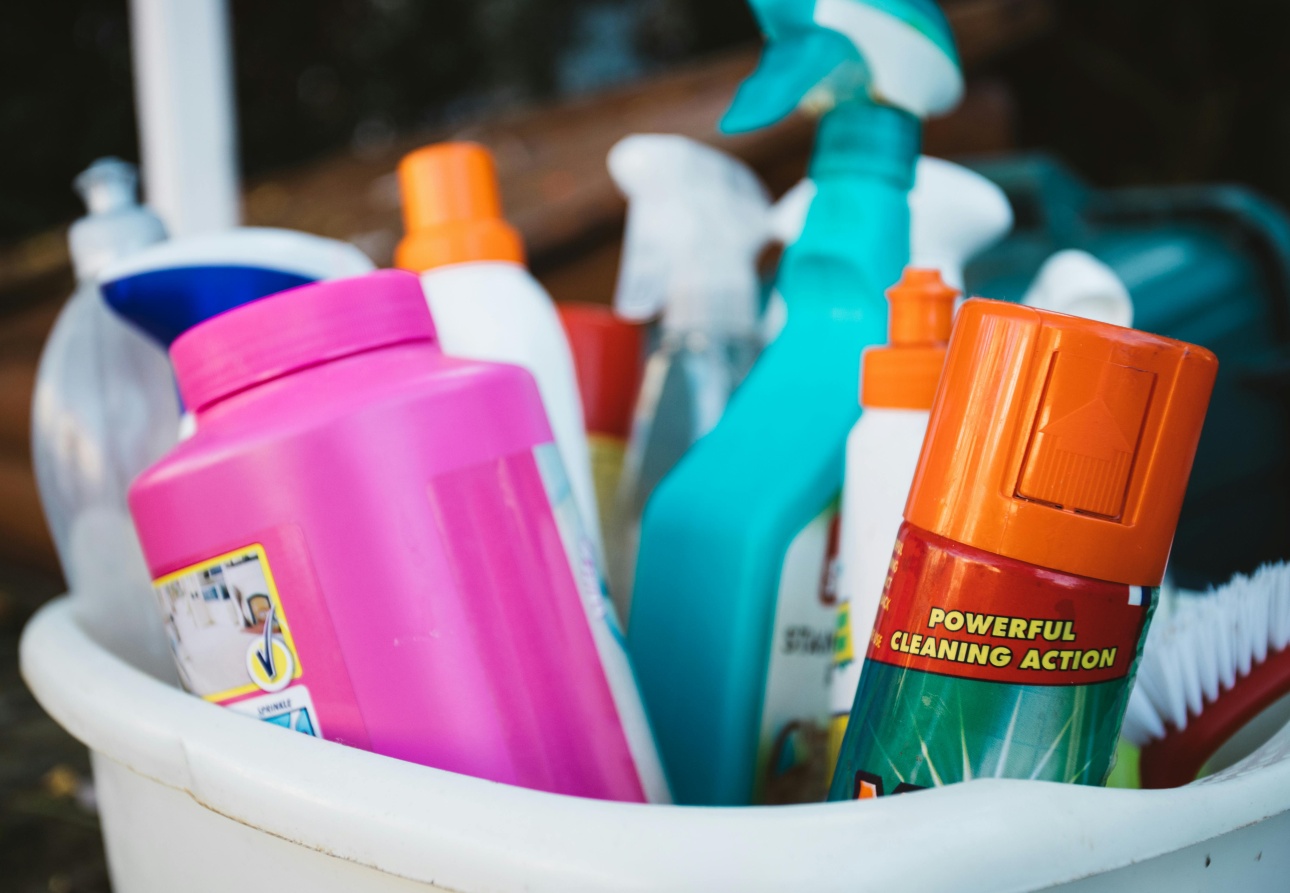Most people want a clean healthy home and expend a lot of effort keeping it that way. Some common cleaning products pose risks you may not want to deal with. Here are some cleaners to keep out of your house.

Toxic Cleaning Chemicals To Avoid
Daugumos komercinių valiklių formulėse yra nuodingų medžiagų, kurios turi įtakos žmonių ir naminių gyvūnėlių sveikatai. Kai kurie iš jų yra šarminiai ir pažeidžia santechniką bei baldus.
Labeling laws do not require all products included in cleaners to be listed. Or they may be listed using other names.
Ammonia
Ammonia is a colorless strong-smelling gas easily dissolved in water. It is found in nature and the human body. The small amount of ammonia produced by your body is essential for building proteins and complex molecules. Manufactured concentrated ammonia used in cleaning products is not the same and can be dangerous.
Uses. Breaks down grease and stains. Does not damage porcelain, tile, and countertops. Used in multiple all-purpose cleaners, window cleaners, drain, toilet, and bathroom cleaners, etc.
Health Effects. Irritates nose, throat, eyes, and lungs. Linked to liver and kidney damage.
Substitutes. Vodka to clean glass and windows. Vinegar and hydrogen peroxide for most other cleaning.
Caution: Never mix ammonia and bleach or bleach-containing products. The combination produces poisonous chloramine gas that can cause chronic breathing problems and even death.
Chlorine (Bleach)
Chlorine gas was used during the First World War as a chemical weapon. Prolonged exposure can have serious effects.
Uses. Laundry products and bathroom cleaners, etc. Used industrially to bleach paper, make pesticides, and disinfect water systems and swimming pools.
Health Effects. Skin irritations and blisters. Coughing and chest tightness. Nausea and vomiting. Blurred vision.
Substitutes. Vinegar and baking soda. Soap and water and some extra scrubbing. Water filters to reduce chlorine in your drinking water.
2-Butoxyethanol
2-Butoxyethanol is a flammable colorless liquid used in solvents to remove grease and grime without too much scrubbing.
Uses. Paint, nail polish, nail polish remover, skin cleansers, stain removers, carpet cleaners, windshield washer fluid, rust remover, etc. Manufacturers are not required to list it as an ingredient.
Health Effects. Eye, nose, and throat irritation. Headache. Vomiting. Health Canada lists it as a toxic product.
Substitutes. Vinegar and newspapers for glass. Vinegar and baking soda for an all-purpose cleaner.
Triclosan
Triclosan is considered one of the worst toxic ingredients. It acts as a preservative and masks odors.
Uses. Cosmetics, body washes, toothpaste, soap, clothing, toys, antiperspirants, fascial tissues, etc.
Health Effects. Can be absorbed through the skin and mouth. FDA banned over-the-counter antiseptics containing Triclosan in 2016. It is an endocrine disruptor that interferes with hormone function.
Substitutes. Check the ingredients list for Triclosan (TSC) and Triclocarbon (TCC) and avoid the products.
Fragrance and Phthalates
One-third of the substances used in the fragrance industry are toxic according to the National Institute of Health and Safety. Manufacturers list them as trade secrets so they do not have to list them. Over 3000 chemicals are used in the fragrance industry.
Naudoja. Beveik kiekvienoje valymo ir grožio priemonėje su kvapu yra kvapiųjų medžiagų, kvepalų ir (arba) ftalatų. Taip pat medicinos prietaisai, rašalas ir klijai. Paprastai sudedamųjų dalių sąraše ir „Kvapas“. Oro gaivikliuose gali būti vėžį sukeliančio benzeno, formaldehido ir kitų lakiųjų organinių junginių (LOJ). Poveikis sveikatai. Mažesnis spermatozoidų skaičius, didesnė krūties vėžio rizika, vaisingumo problemos ir didesnė vaikų astmos rizika. Įtariami endokrininę sistemą ardantys vaistai. Pakaitalai. Beveik neįmanoma išvengti kvapiųjų medžiagų ir ftalatų. Apribokite poveikį naudodami produktus be kvapiųjų medžiagų, įskaitant muilą, džiovinimo paklodes ir kosmetiką. Sumažinkite plastikinių butelių naudojimą. Perskaitykite sudedamųjų dalių sąrašą etiketėse. Ieškokite kvepalų / kvapų, kvepalų, ftalatų, DEP, DEHP arba DBP. Oro gaiviklius pakeiskite eteriniais aliejais ir kvapniais augalais.
Sodium Hydroxide (Lye or Caustic Soda)
Natrio hidroksidas yra galinga ir efektyvi riebalų šalinimo priemonė. Tai šalutinis chloro gamybos produktas.
Naudoja. Muilai, orkaitės valikliai, kanalizacijos kamščių šalinimo priemonės. Poveikis sveikatai. Stiprūs koroziniai produktai sukelia odos ir akių dirginimą, kvėpavimo pasunkėjimą, pykinimą ir viduriavimą, kraujospūdžio sutrikimus. Pakaitalai. Jei yra, naudokite orkaitės savaiminio išsivalymo funkciją. Išvalykite užsikimšusius kanalizaciją stūmokliu arba vandentiekio gyvate. Sumaišykite kepimo soda su actu, kad galėtumėte naudoti kaip riebalų šalinimo priemonę.
If you like our page please share with your friends & Facebook